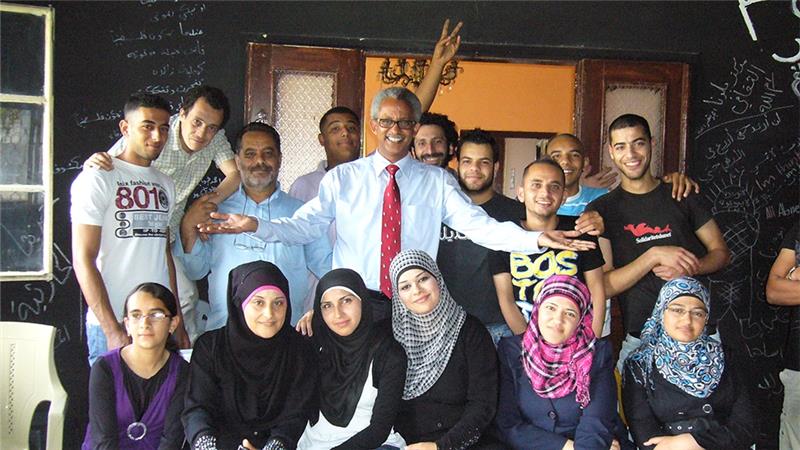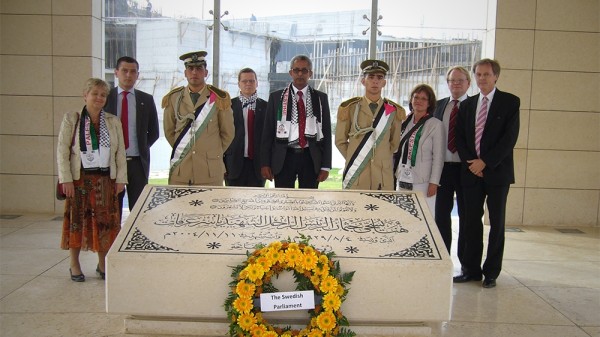PBS: Escaping Eritrea … [Read More...] about ካብ ውሽጢ ቤት ማእሰርታት ኤርትራ
From Eritrean child soldier to Swedish parliamentarian
Fatma Naib |
Arhe Hamednaca is a member of Sweden’s parliament, but his commitment to social justice began as a child fighter.
When Eritrea formally declared its independence from Ethiopia on May 24, 1993, it marked the culmination of a more than 30-year-long struggle for freedom. Few understand the human toll of this conflict better than 62-year-old Arhe Hamednaca.
He was just 15 years old when, in 1968, he became a child soldier, joining the Eritrean Liberation Front (ELF). But he already understood well the enemy he was fighting. A year earlier, he had been picked up by the Commandos, an anti-independence force comprised largely of Eritreans from the country’s highland region and Ethiopians. For a month, they tortured him.
Trained by the Israelis, and armed by Israel and the US, the Commandos were known for their brutality.

Then, in 1962, the Ethiopian Emperor Haile Selassie I formally dissolved the federation and annexed Eritrea. Today, Hamednaca recalls a childhood defined by the conflict. “When I was 12, the [independence] fighters would come to our villages at night. They would sing freedom songs and tell us about Hamid Idris Awate, the founder of ELF and the man considered to be the father of the armed revolution.
“I was moved by it and I used to idolise them,” the softly spoken Hamednaca continues. That was when he began helping the fighters. As part of a cell with other teenagers, he handed out leaflets, delivered messages and bought the fighters items they needed from the markets.
‘Hatred filled my heart’
For a couple of years he was able to get by undetected. Then the Commandos caught him. “I was taken to an underground basement where I spent a month being tortured by the Commandos,” he remembers. “I didn’t think I would make it out alive. But I did.” That he survived was largely thanks to his father, who managed to secure his release. “For a week after they let me go blood was still coming out of my mouth. Until this day I remember the pain and the hatred that filled my body and heart.”
It was another year before Hamednaca officially joined the fighters. It was the day before Easter when word came that the Commandos were looking for him. Hamednaca knew then what he had to do. “I decided I’d rather die fighting than being tortured to death by them,” he says. “So on Easter day 1968, I took off and joined the front line of the revolution. I was 15.” The next day, the Commandos came for his father. His voice breaks as he recalls what happened next; how his father was tortured and spent much of the following two years in prison.

Then, in 1975, a rumour spread that Hamednaca had been killed in battle. Concerned that the false news would reach his family, he snuck back to his village to reassure them. He spent just a few hours there, but it helped to ease his mind as much as theirs. “It was important for me to see my father and to ask for his forgiveness,” he says. “He understood and told me that he was not upset with me, and that in fact he was proud.”
The Palestinian connection
It was a time when the tide seemed to be turning in favour of the liberation fighters. During the 1960s, Ethiopia was able to capitalise on the disunity among Eritreans. Not everyone was in favour of independence, and Selassie sought to emphasise the sectarian and tribal tensions in the country. Hamednaca, an Orthodox Christian from the lowland part of Eritrea, explains: “They used to say: The ELF are Arabs and they are trying to include Eritrea with other Arab and Islamic countries. Most of the Christians in the highland areas of Eritrea were against us.”
But ELF was able to secure support from outside of the country. “The Palestine Liberation Organization [PLO], Syria and Iraq supported us financially and provided us with military training,” he says. “The leadership of the ELF all received education and training by them; they stood by us and believed in our right to be free.” In turn, the rebels felt a particular bond with the Palestinians. “Their cause was always in the heart and mind of the ELF fighter, we shared their pain of oppression and injustice.”
When Selassie was toppled by a communist military government in 1974, and Mengistu Haile Mariam, one of its most prominent members, came to power in 1977, the brutality inflicted upon the Eritreans exceeded even what they had endured before. That served to unite Eritreans, across religious, tribal and regional divides, behind the revolution.
Recognising the strength of the pro-independence fighters and fearing a potential backlash, even some former Commandos switched sides. But infighting within its ranks meant the Eritrean Liberation Front wasn’t best-placed to take advantage of this. Cracks began to emerge within the movement and some members broke away to join the newly formed Eritrean People Liberation Front (EPLF). At times, the two groups even turned their guns on each other.
Between 1975 and 1977, both groups captured key cities. But the Soviet Union intervened militarily in support of Ethiopia’s communist government, overwhelming the independence fighters. But as the Cold War drew to an end and opposition forces within Ethiopia became more powerful, the independence fighters gained the upper hand.
In 1991, EPLF liberated the capital, Asmara. It took another two years until a UN-led independence referendum – in which 99.8 percent voted in favour – was held. Isaias Afowerki, the former secretary-general of EPLF, became the country’s president and, on May 28, Eritrea became the 182nd member of the UN.
‘I just put down the gun’

“I am black, African and an ex-fighter, all of a sudden I am told I have rights,” he continues, the sense of wonder still evident in his voice all these years later. But Hamednaca still had the spirit of a freedom fighter. In 1988, he joined the Swedish Socialist Party, attracted by its solidarity with oppressed groups around the world. He became active in civil societies and trade unions. Then, in 2001, he joined Fryushuset, an organisation that focuses on the needs of young Swedes, particularly those from marginalised communities.
As his home country marks 24 years of independence, the parliamentarian is experiencing mixed emotions. “I am still in pain,” he says. “I remember all the martyrs and the sacrifices they made. I can still see their faces as they were dying and how they would say we are sacrificing our lives for freedom.” “We finally have our country. But the Eritrean people are not truly liberated. I didn’t fight for the sake of a flag only; it was for true freedom.”
And today it is not only the unfulfilled potential of his country that pains him; it is also the loss of the man that conflict kept him from for so long. Hamednaca’s father died 10 years ago, and although he saw him when he returned to Eritrea following independence in 1993, he cannot shake the feeling that they simply did not have enough time together.
“I still feel that I needed more time with him. I needed to talk to him about what we went through and about life today. I needed that closure,” he says. Hamednaca hasn’t returned to Eritrea since. But in many ways, that impassioned 15-year-old child soldier is still very much alive and fighting for social justice – only now, from a European parliament rather than an Eritrean trench.
